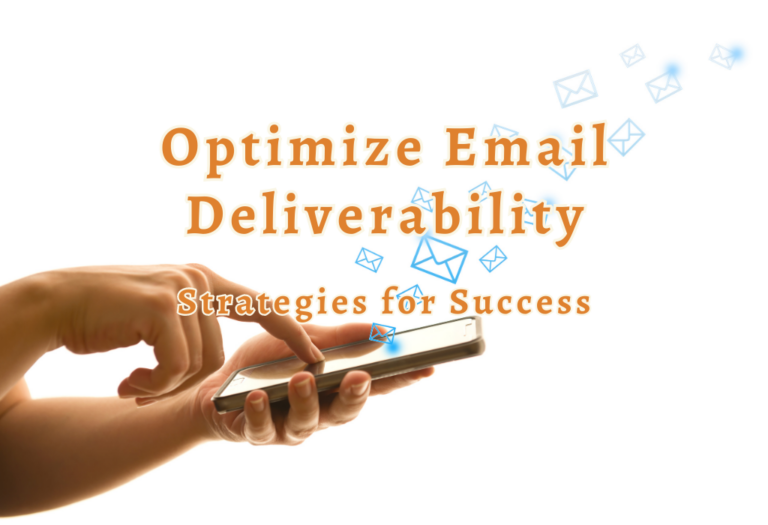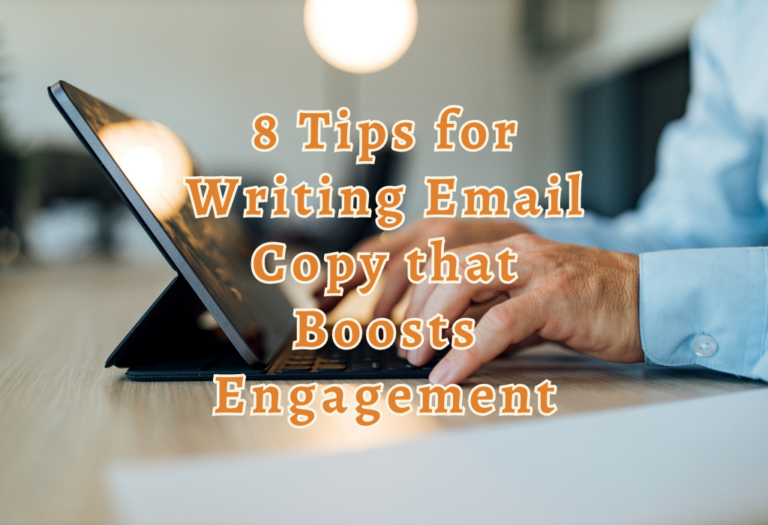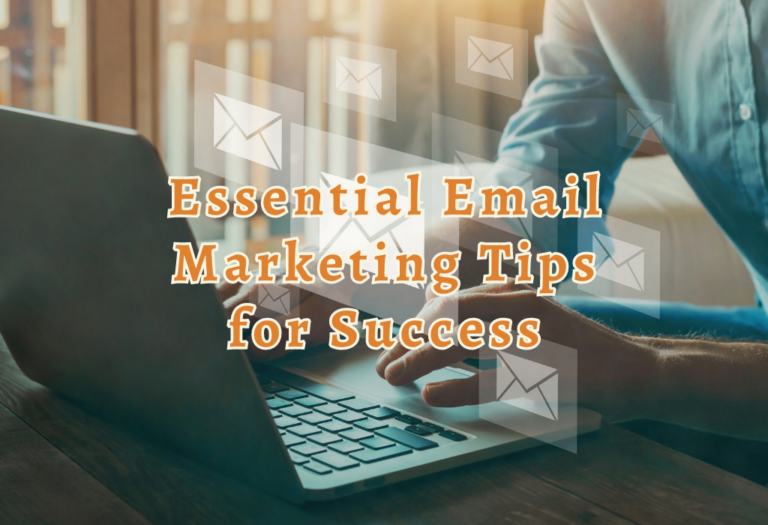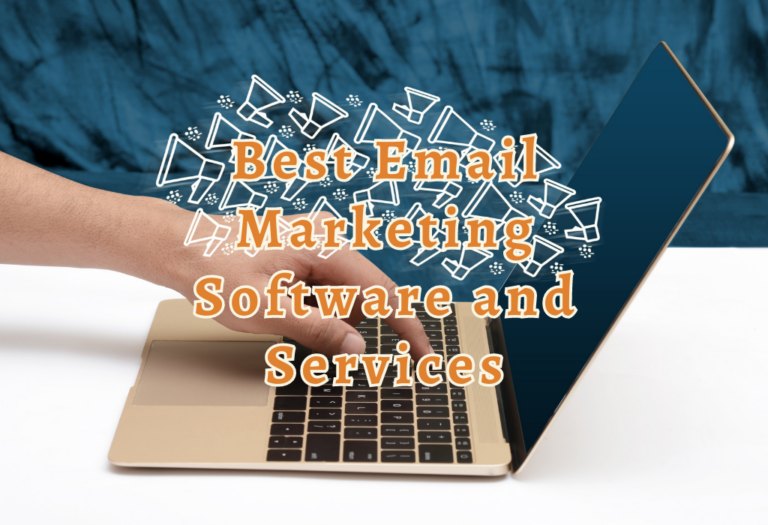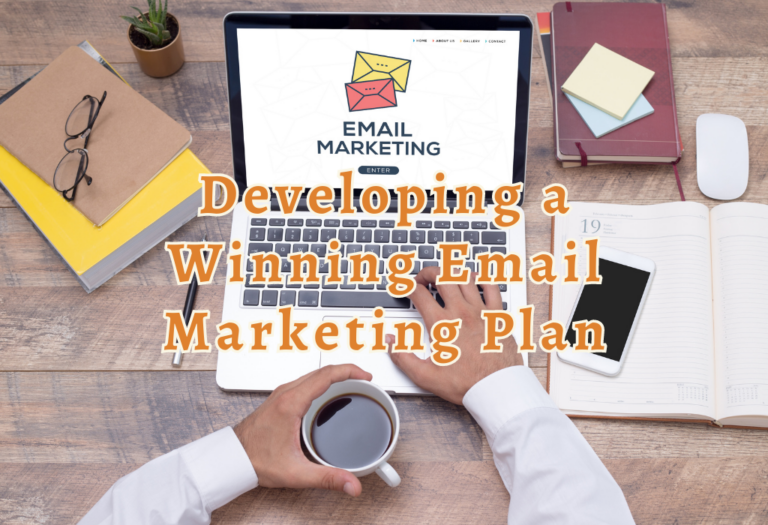Email marketing best practices are essential for businesses to maximize their email campaigns. Utilizing the correct approaches can help you to raise involvement and generate conversions from your intended demographic.
From optimizing content and designing for mobile devices to personalization techniques and analyzing performance metrics, there’s a lot that goes into successful email marketing.
To ensure success, it’s important to understand how to manage lists effectively while adhering to regulatory compliance laws as well. Learn more about these key areas of email marketing best practices in this blog post.
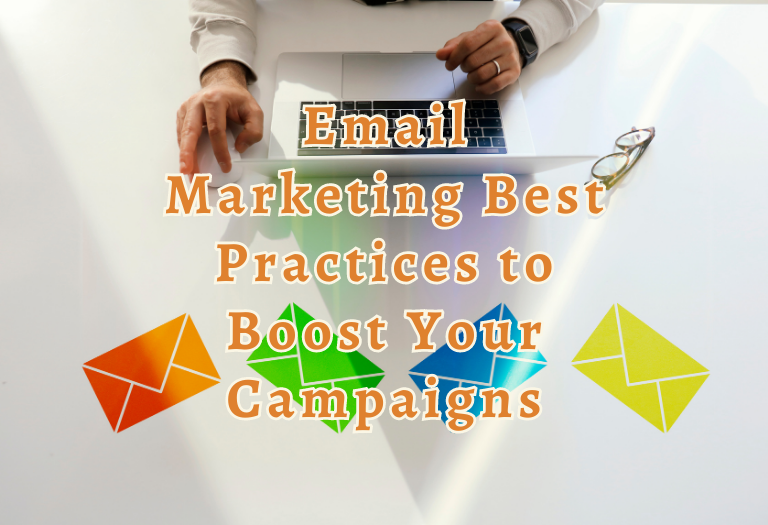
More Resources :
Email Marketing Best Practices to Boost Your Campaigns
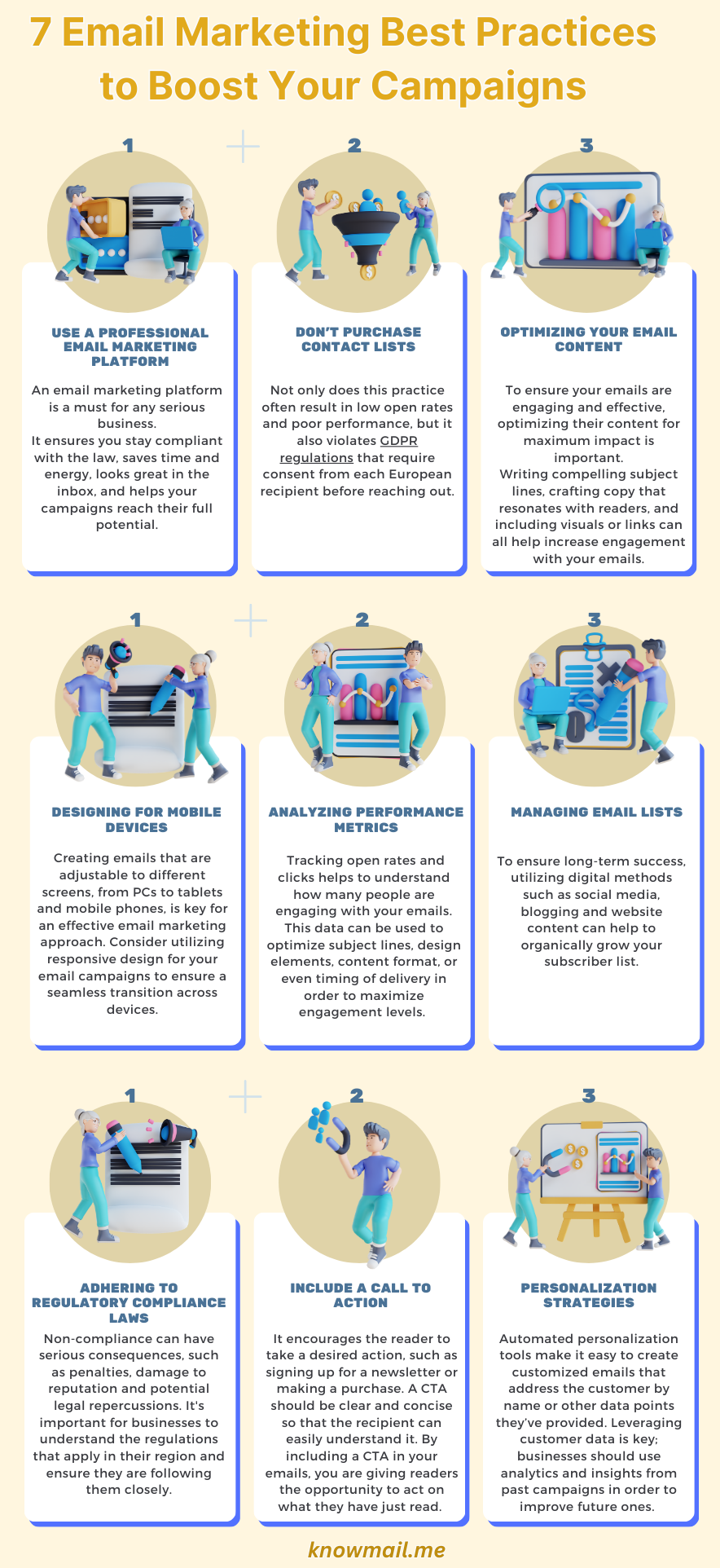
#1 Use a Professional Email Marketing Platform
An email marketing platform is a must for any serious business. It ensures you stay compliant with the law, saves time and energy, looks great in the inbox, and helps your campaigns reach their full potential.
For example, a professional email marketing platform like Constant Contact and MailChimp provides features like automated opt-in forms to ensure only opted-in subscribers are receiving emails from you. This protects both you and your customers from legal issues that could arise if someone was to receive an unsolicited message.
It also allows you to customize mobile-responsive templates with your brand colors and logos so your messages look as good on mobile devices as they do on desktop computers. You can even add content blocks like videos or images that will automatically adjust based on the size of the device being used by each recipient.
Plus, it makes sure all necessary footer information is included in every message – such as contact details, unsubscribe links, etc – which keeps you safe from hefty fines should any laws change over time.
#2 Don’t Purchase Contact Lists
When it comes to email marketing, one of the worst practices you can engage in is purchasing contact lists. Not only does this practice often result in low open rates and poor performance, but it also violates GDPR regulations that require consent from each European recipient before reaching out. Rather than buying a list of contacts, marketers should focus on building their own list organically. This can be done by providing value to potential customers through content such as blog posts or webinars. By offering something valuable for free, businesses are more likely to build relationships with their target audience and increase engagement with their emails.
Another way to reach your target audience without breaking any laws is by using Versium Reach – a platform made specifically for B2B marketers that allows them to access data about their target market across multiple channels without having to purchase contact lists. It’s an easy way for businesses to stay compliant while still being able to connect with the right people at the right time.
Purchasing contact lists may seem like an attractive option when trying to grow your business quickly, but it’s not worth the risk associated with it. Not only could you face hefty fines if caught violating GDPR regulations, but you’ll also end up wasting money on contacts who won’t even read your emails due to low open rates caused by lack of engagement and trust between sender and receiver. Instead of taking shortcuts that could land you in hot water later down the line, take some time now and invest in building relationships with potential customers so they will be more likely respond positively when contacted via email campaigns down the road
#3 Optimizing Your Email Content
Email content is the backbone of any successful email marketing campaign. To ensure your emails are engaging and effective, optimizing their content for maximum impact is important. Writing compelling subject lines, crafting copy that resonates with readers, and including visuals or links can all help increase engagement with your emails.
When writing subject lines, make sure they are concise yet eye-catching enough to draw attention from recipients. Try using action words like “discover” or “unlock” as well as emotional language such as “amazing” or “incredible” in order to capture interest quickly. Including personalization elements like a recipient’s name or location in the subject line may also be helpful for an extra touch of relevance.
Craft your email body to address its intended audience directly, utilizing analogies and metaphors to create an emotional connection that resonates beyond the intellectual. Keep sentences short and simple while making sure each one contains valuable information about what you have to offer them.
Employ the use of illustrative figures, such as comparisons and similes, to form a bond between your readers emotionally rather than just making them grasp the concept intellectually. Additionally, consider incorporating visuals into your message by adding images or videos which can help break up long blocks of text and keep viewers engaged throughout the entire email experience.
Finally, don’t forget about links. Including clickable buttons within the body of your message allows recipients easy access to whatever page you want them directed towards; whether it’s a product page on your website or even a blog post containing more detailed information about what you have available for them – anything goes. Just make sure these links are clearly visible so readers won’t miss out on any potential opportunities by clicking through from the email.
#4 Designing for Mobile Devices
Designing for mobile devices is an essential part of any email marketing strategy. Creating emails that are adjustable to different screens, from PCs to tablets and mobile phones, is key for an effective email marketing approach. Consider utilizing responsive design for your email campaigns to ensure a seamless transition across devices.
Responsive Design Basics
A responsive design allows your emails to adjust their layout automatically depending on the device being used by the recipient. No matter the device, your message can be read and interacted with in a way that’s appropriate for them. To create a responsive design, you should use media queries and flexible grids so that elements such as images, buttons, text blocks, and other content can resize or rearrange themselves accordingly. Additionally, make sure to test how your email looks across multiple platforms before sending it out.
Testing Across Platforms
Testing across different platforms is key when designing for mobile devices since each platform has its own unique display requirements. Verifying compatibility across diverse email applications such as Outlook and Gmail and web browsers like Chrome or Safari is vital for ensuring recipients can view messages accurately no matter which device they are utilizing. You should also consider testing out different screen sizes—from small phones up through large desktop monitors—to make sure everything looks good everywhere it needs to be seen.
When creating emails specifically designed for touchscreen devices like tablets and smartphones, there are several things you need to keep in mind in order to provide users with an optimal experience while interacting with your message on their device’s smaller screenspace size. Firstly, make sure all clickable elements (such as links) have enough padding around them so users don’t accidentally tap something else instead. Secondly, reduce the amount of copy included within each section – long paragraphs will be difficult-to-read on these smaller screens. Lastly, increase font size wherever possible – larger fonts will make reading easier too.
#6 Analyzing Performance Metrics
Analyzing performance metrics is essential for any email marketing campaign. Tracking opens, clicks and conversion rates as well as assessing ROI enable marketers to gain knowledge of their customers’ preferences and habits. Tracking open rates and clicks helps to understand how many people are engaging with your emails. This data can be used to optimize subject lines, design elements, content format, or even timing of delivery in order to maximize engagement levels.
Tracking click-throughs can also provide insight into which links within an email are garnering the most attention, potentially revealing which offerings have a greater appeal to your audience. Measuring conversion rates provides insight into how effective your campaigns are at driving sales or other desired actions from subscribers such as signing up for an event or downloading a white paper. Conversion rate optimization techniques involve A/B testing different versions of emails against each other in order to determine which version performs best based on the goal being measured (e.g., number of purchases).
Finally, evaluating ROI helps marketers understand whether their efforts are generating positive returns for their businesses by comparing revenue generated from email campaigns versus expenses incurred through running them (e.g., cost per send). Knowing the ROI enables better decision making when it comes time to allocate resources across channels such as paid search ads or social media posts so that budgets are spent where they will have maximum impact on business goals like increasing customer lifetime value (CLV).
#6 Managing Email Lists
Properly managing email lists is fundamental to any prosperous email marketing plan. It’s important to understand how to grow, prune and maintain your list in order to maximize the effectiveness of your campaigns. Growing subscriber lists organically is essential for long-term success. To ensure long-term success, utilizing digital methods such as social media, blogging and website content can help to organically grow your subscriber list. Ensuring that your registration procedure is straightforward and obvious will help potential subscribers understand precisely what they are subscribing to before submitting their details.
Pruning inactive subscribers should also be part of regular list maintenance efforts. Keeping an eye on open rates, click-through rates and other engagement metrics will help you identify those who are no longer engaging with your emails – it’s best practice then remove them from the list or send them re-engagement messages as appropriate. Doing this regularly helps keep your list healthy and ensures that only active users receive your emails.
#7 Adhering to Regulatory Compliance Laws
Complying with applicable regulations is a fundamental element of any email marketing plan. Non-compliance can have serious consequences, such as penalties, damage to reputation and potential legal repercussions. It’s important for businesses to understand the regulations that apply in their region and ensure they are following them closely.
When it comes to understanding CAN-SPAM regulations, businesses must be aware of what constitutes spam under this law. This includes unsolicited commercial emails sent without permission from the recipient or deceptive subject lines and content that misleads recipients into opening emails they wouldn’t otherwise open. Companies must also provide a valid physical address in all emails as well as opt-out instructions for those who no longer wish to receive communications from them.
The GDPR, effective across Europe, necessitates that organisations managing EU individuals’ information – including email addresses – observe rigorous regulations in terms of collecting, storing, utilising, disseminating and deleting this data. Companies need clear policies in place outlining how personal information will be handled by employees or third parties with whom it may be shared with along with measures taken should there ever be a breach in security resulting in potential misuse of customer data.
Canada’s Anti-Spam Legislation (CASL) is similar but more stringent than CAN-SPAM rules applying to commercial electronic messages such as emails and other forms of communication like text messages. Businesses must obtain consent before sending any message and have procedures set up for unsubscribing customers when requested as well as ensuring any third party suppliers comply with these same requirements too, if applicable.
#8 Include a Call to Action
Call to action (CTA) is essential to any successful email marketing campaign. It encourages the reader to take a desired action, such as signing up for a newsletter or making a purchase. A CTA should be clear and concise so that the recipient can easily understand it. By including a CTA in your emails, you are giving readers the opportunity to act on what they have just read.
Keep your call-to-action statement short and sweet – no more than two sentences long at most. You want people to understand what you’re asking them to do without having to read too much text. Also, make sure your CTA stands out from the rest of your content; use bold font or bright colors if necessary. In addition, ensure that there is only one call-to-action per email message so as not to confuse readers with multiple requests for different actions within one message.
For example, don’t ask someone both “Sign up now!” and “Buy now!” in the same email – pick one and stick with it! Additionally, consider using language like “click here” instead of “go here” when creating links in order to increase click through rates on CTAs embedded within emails. Finally, track how well each CTA performs over time by measuring metrics such as open rate and click through rate (CTR). This will help you identify which calls-to-action are working best for your audience so that you can optimize those messages moving forward while also helping you create better campaigns based on data insights rather than guesswork alone.
#9 Personalization Strategies
Personalization strategies are essential for successful email campaigns. Segmentation tactics involve grouping customers into categories based on their preferences and behaviors, allowing marketers to send more relevant messages tailored to each segment. Automated personalization tools make it easy to create customized emails that address the customer by name or other data points they’ve provided. Leveraging customer data is key; businesses should use analytics and insights from past campaigns in order to improve future ones.
By tracking open rates, clicks, and conversions of previous emails, businesses can identify what works best for their target audience and optimize accordingly. Additionally, using NLP (natural language processing) technology can help marketers better understand user intent to craft more effective content that resonates with recipients. With these powerful tools at their disposal, companies can create personalized experiences for every recipient, leading to increased engagement and ROI from email marketing efforts.
Conclusion
To sum up, companies need to adhere to email marketing principles in order to achieve their desired outcomes. It is important to optimize content and design emails with mobile devices in mind, personalize messages when possible, analyze performance metrics regularly, manage email lists efficiently and adhere to regulatory compliance laws. By following these guidelines you can ensure that your business’s email marketing efforts will be successful. Take your email marketing to the next level with Knowmail‘s comprehensive tools and resources. Get expert advice on design, deliverability testing, and more for maximum campaign success.

